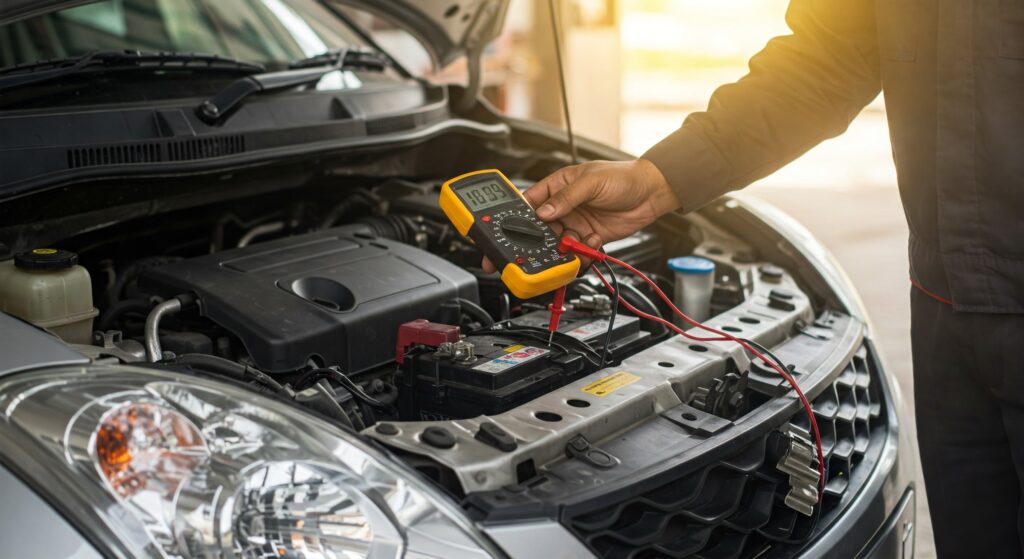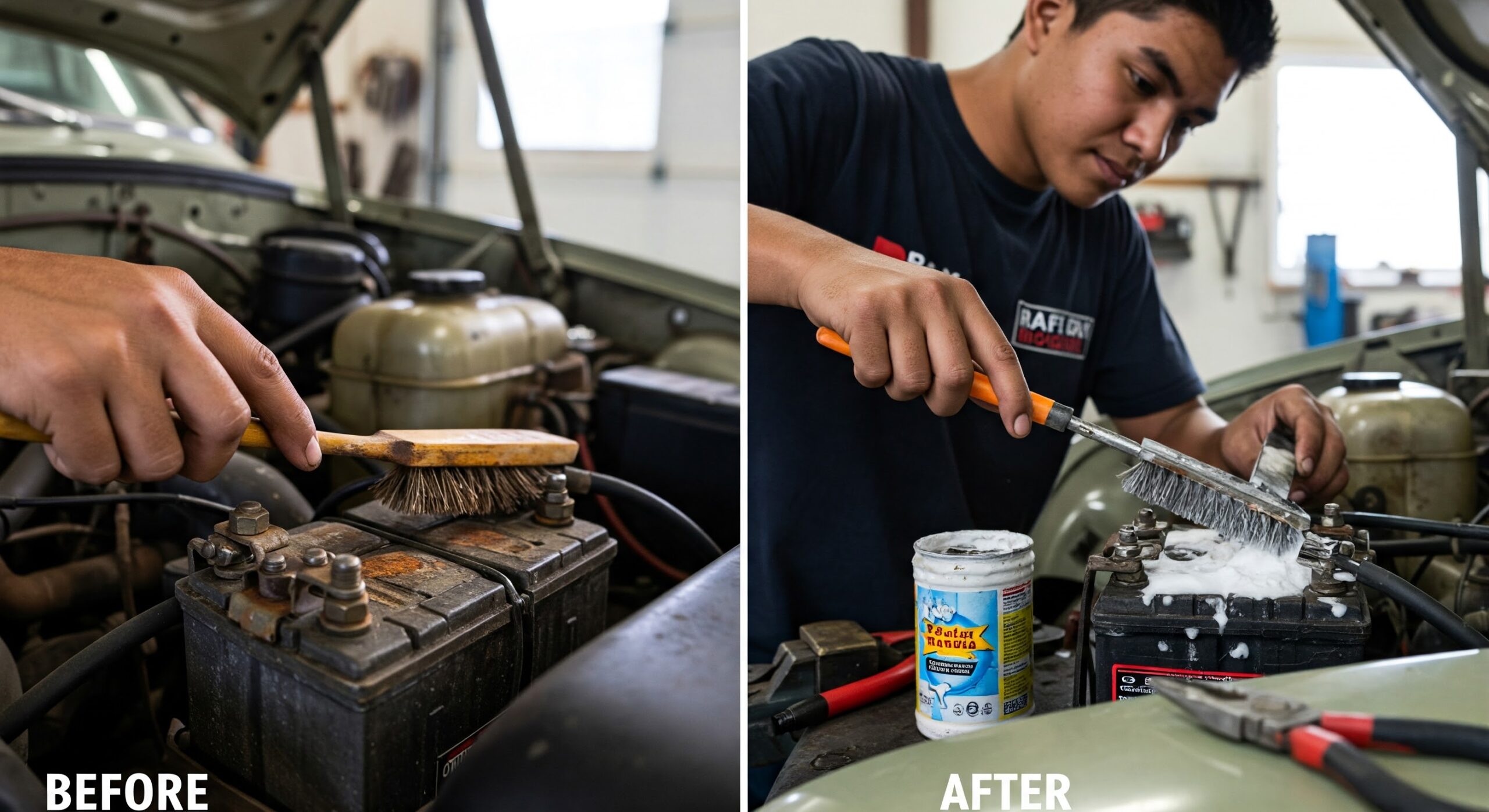How to Diagnose and Fix Battery Problems in Your Maruti Suzuki Swift

Imagine you’re all set to leave for office or a family trip, and your Maruti Suzuki Swift just won’t start. Most of the time, the reason is a weak or dead battery. In a city like Lucknow, where traffic, weather, and road conditions can be tough, a reliable battery is a must.
In this easy guide, we’ll explain how to check if your Swift’s battery is having issues and what you can do to fix them. All the tips shared here are directly from the official Maruti Swift Owner’s Manual, so you can trust the advice.
Why Your Swift’s Battery Is So Important
Your car’s battery is what powers the engine to start, turns on the lights, the music system, wipers, and even the central locking. In short, no battery – no drive!
As per the manual, checking the battery’s water (electrolyte) level and ensuring there’s no leakage is part of the regular service routine. But you can also check some things at home.
Signs Your Battery May Be in Trouble
Here are common warning signs every Swift owner in Lucknow should look for:
-
Engine takes time to start or sounds tired while starting.
-
Headlights or inside lights become dim.
-
Dashboard shows a battery warning light.
-
You hear clicking sounds when turning the key.
-
White or green powder seen near battery terminals – that’s corrosion.
If you notice any of these signs, it’s time to check the battery.
How to Check Battery Problems at Home

1. Look Carefully at the Battery
-
Check if water level in the battery is low. If it is, it needs to be topped up.
-
See if the battery case looks swollen or is leaking.
-
Make sure the wires connected to the battery are tight and not rusted.
2. Check Battery Voltage (if you have a voltmeter)
-
A good battery shows around 12.6 to 12.8 volts when the engine is off.
-
Below 12.4 volts means the battery might be weak or needs charging.
3. Get a Load Test
If you’re unsure, visit a mechanic or battery shop where they can check the battery under load (while using power) to see if it’s holding charge properly.
How to Fix Common Battery Issues
1. Terminals Are Loose or Rusty
-
Remove the negative wire (black) first, then the positive (red).
-
Clean the metal ends with a brush and baking soda mixed in water.
-
Connect the wires back – red first, then black.
2. Battery Water Is Low
-
Only add distilled water (available at most car accessory shops). Don’t overfill.
-
Wear gloves while doing this. Battery fluid is harmful to skin.
3. Battery Is Completely Dead
If your battery is old and not charging even after jump-starting, it’s time to replace it. Always use a battery that matches Maruti’s original specs.
How to Jump-Start Your Swift (if it won’t start)
You’ll need another vehicle with a working battery and jumper cables.
-
Turn off both vehicles.
-
Connect red cable to positive (+) on both batteries.
-
Connect black cable to negative (-) on working battery, and clamp the other end to any unpainted metal part of your Swift (not on the dead battery).
-
Start the working car, wait 1–2 minutes, then start your Swift.
-
Keep your Swift running for at least 15–20 minutes to charge the battery.
When Should You Replace the Battery?
In Indian conditions, Swift batteries usually last about 3–4 years. Replace the battery if:
-
The car takes longer to start even after charging.
-
You needed a jump-start recently.
-
You see corrosion or swelling on the battery.
Tips to Make Your Battery Last Longer
-
Avoid short drives: The battery doesn’t get time to charge properly.
-
Turn off lights and music when engine is off.
-
Check the battery before and after summer or winter – extreme weather affects battery life.
-
Use only genuine Maruti batteries and accessories. MSGPA (Maruti Suzuki Genuine Parts and Accessories) Hai To Safe Hai.
Where to Buy the Best Swift Battery in Lucknow?
If you live in Lucknow and want a battery that lasts and performs well, visit Beekay. We are a leading distributor of genuine Maruti products – building trust and delivering quality in car parts, accessories, and services for over 30 years.
Our outlets are open to car owners and mechanics. You can get the same quality products that Maruti recommends, including batteries, directly from us.
Final Words
Battery problems are common but can be handled easily if you know what to look for. Regular checks and quick action can save you a lot of stress.
So next time your Swift doesn’t start in the morning, don’t panic. Check the battery. And when it’s time to replace it, remember – Genuine Hai To Safe Hai.
Meta Description:
Is your Maruti Swift not starting? Learn how to check and fix battery problems easily with our simple guide for Swift owners in Lucknow. MSGPA Hai To Safe Hai!
Title Suggestions:
-
Swift Not Starting? Check These Battery Tips for Lucknow Drivers
-
Easy Way to Fix Battery Problems in Your Maruti Suzuki Swift
-
Battery Dead in Your Swift? Here’s What You Can Do
-
Lucknow Swift Owners: Learn to Check and Replace Your Car Battery
-
Why Swift Batteries Die Early – And How to Make Them Last Longer